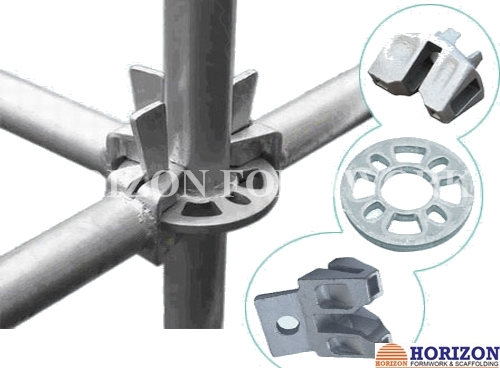Nov . 11, 2024 05:11 Back to list
Sliding Formwork Solutions for Core Wall Construction by Leading Manufacturers
Sliding Formwork for Core Wall Construction A Comprehensive Overview for Manufacturers
In the dynamic world of construction, efficiency, safety, and precision are paramount. Among the various methods used to build vertical structures, sliding formwork has gained significant attention, especially for core wall construction. This innovative technique streamlines the construction process, reduces labor costs, and improves the overall quality of structures. This article explores the sliding formwork system, its advantages, and considerations for manufacturers engaging in this specialized niche.
What is Sliding Formwork?
Sliding formwork, also known as slipforming, is a continuous casting method used to create vertical concrete structures such as walls, columns, and shafts. In this system, formwork is assembled to shape the concrete and then “slides” or moves upwards as the concrete is poured and cured. This allows for the uninterrupted construction of tall and slender structures, including core walls that are crucial elements in high-rise buildings, providing both structural integrity and space-efficient functionality.
Advantages of Sliding Formwork
1. Increased Efficiency One of the most significant benefits of sliding formwork is its efficiency. Once the formwork is set up, it can continuously rise along with the curing concrete. This process enables construction to proceed rapidly with minimal delays, significantly shortening project timelines.
2. Cost-Effectiveness Although the initial investment in sliding formwork systems can be high, the long-term savings are substantial. The reduction in labor costs, coupled with faster construction times, often leads to a lower overall project budget. Additionally, fewer resources are wasted when using this method.
3. Enhanced Quality Sliding formwork produces high-quality finishes with minimal joints, reducing the potential for defects and ensuring structural integrity. The system creates a uniform thickness in the walls, which contributes to the durability of the construction.
4. Safety Improvements Operating at height can be dangerous in traditional construction methods. However, sliding formwork systems reduce the need for excessive scaffolding and provide a safer working environment for crews engaged in vertical construction tasks.
5. Adaptability The versatility of sliding formwork makes it an attractive option for manufacturers. These systems can be customized based on project specifications, accommodating various wall thicknesses and architectural designs. Additionally, they can be used in different weather conditions, making them suitable for diverse geographical locations.
sliding formwork for core wall manufacturers

Considerations for Manufacturers
While the sliding formwork method presents numerous advantages, manufacturers must consider several factors to optimize their operations
1. Design and Engineering Manufacturers need to invest in advanced design and engineering solutions to develop formwork systems that meet safety and performance standards. This includes thorough testing and analysis to ensure that the formwork can withstand the stresses imposed during the concrete pouring process.
2. Material Selection The choice of materials for sliding formwork is critical. Manufacturers should utilize high-quality, durable materials that provide adequate strength and resistance to wear over time. Lightweight materials may improve handling and efficiency while maintaining structural integrity.
3. Training and Implementation Proper training for workers involved in the installation and operation of sliding formwork is essential. Manufacturers should provide adequate training programs to ensure that teams understand the complexity of the system, including troubleshooting and maintenance practices.
4. Regulatory Compliance Manufacturers must stay updated on local building codes and safety regulations concerning formwork systems. Compliance is crucial to avoid legal issues and ensure the safety of construction workers and the public.
5. Technology Integration Embracing technology, such as Building Information Modeling (BIM) and automation in the formwork process, can enhance efficiency and accuracy. Manufacturers should explore how innovative technologies can be integrated into their sliding formwork solutions.
Conclusion
Sliding formwork for core wall construction is revolutionizing the way vertical structures are built, offering significant efficiencies and enhancements in quality and safety. For manufacturers, embracing this modern construction technique comes with great potential, provided they factor in critical considerations related to design, materials, training, and regulatory compliance. By adopting sliding formwork systems, manufacturers position themselves at the forefront of the construction industry's innovation, ready to meet the challenges of modern architecture and infrastructure development.
-
High-Quality U Head Jack Scaffolding – Reliable Scaffolding Jack Head Manufacturer & Factory
NewsJul.08,2025
-
High-Quality I Beam H20 Leading Timber Beam H20 Material Factory, Exporters & Manufacturers
NewsJul.08,2025
-
High-Quality Powder Coating Steel Formwork - Durable & Corrosion Resistant Solutions
NewsJul.07,2025
-
Inclined Column Formwork Supplier – Durable & Precise Solutions for Unique Structures
NewsJul.07,2025
-
High-Quality Water Stop Solutions Trusted Water Stop Company & Suppliers
NewsJul.07,2025
-
High-Quality Formwork Material Supplier Reliable Manufacturer & Factory Solutions
NewsJul.06,2025